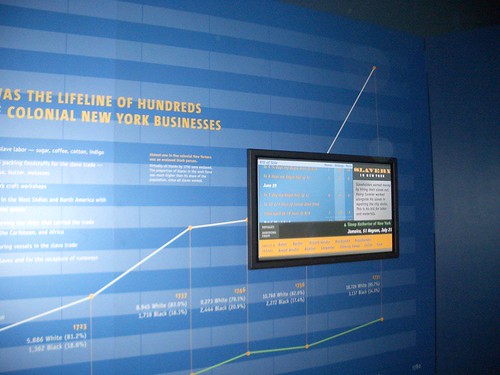December 20, 2006
Wonderful Things
 Monday night I went to the ITP’s end-of-semester show. A friend of mine is in the program and I went to check out the scene. ITP, the Interactive Telecommunications Program, is part of the Tisch School of the Arts at NYU. ITP has been around since ’79, and lies somewhere concetually between the MIT Media Lab and Mary Flanagan. When I visited the MIT Media Lab this summer I began to understand how it was really operating as a pooled R & D lab for corporate interests (with plenty of military funding). I got the vibe that ITP is coming from a different place with different priorities, but I don’t really know the full back story.
Monday night I went to the ITP’s end-of-semester show. A friend of mine is in the program and I went to check out the scene. ITP, the Interactive Telecommunications Program, is part of the Tisch School of the Arts at NYU. ITP has been around since ’79, and lies somewhere concetually between the MIT Media Lab and Mary Flanagan. When I visited the MIT Media Lab this summer I began to understand how it was really operating as a pooled R & D lab for corporate interests (with plenty of military funding). I got the vibe that ITP is coming from a different place with different priorities, but I don’t really know the full back story.
Here are some of the highlights of the many many projects I saw the other night:
- The Stuff Project
- We Rock NYC
- Network Journaling
- Whales in the Sewer
- The ‘Is our machines learning?’ Machine
- Witness Human Rights Video Hub Pilot
- Turing Machine
- Action at a Distance
- Aura
- Solar Jelly
- Urban Sonar
Emerging themes continue to suggest that we are indeed embarking on a era that can be described as “The End of Forgetting“, and that epistemology itself is transforming beneath our feet. That is, the way we know what we know, the kinds of things that we know, and our relationship to knowledge is being transformed by shifts in memory, computational possibilities, simulation, and visualization. Going to a show like this really reinforces these bold predictions.
 Filed by jonah at 5:45 pm under aesthetics,air,earth,epistemology
Filed by jonah at 5:45 pm under aesthetics,air,earth,epistemology
No Comments

 A recent visit to the new
A recent visit to the new 

 2 Comments
2 Comments